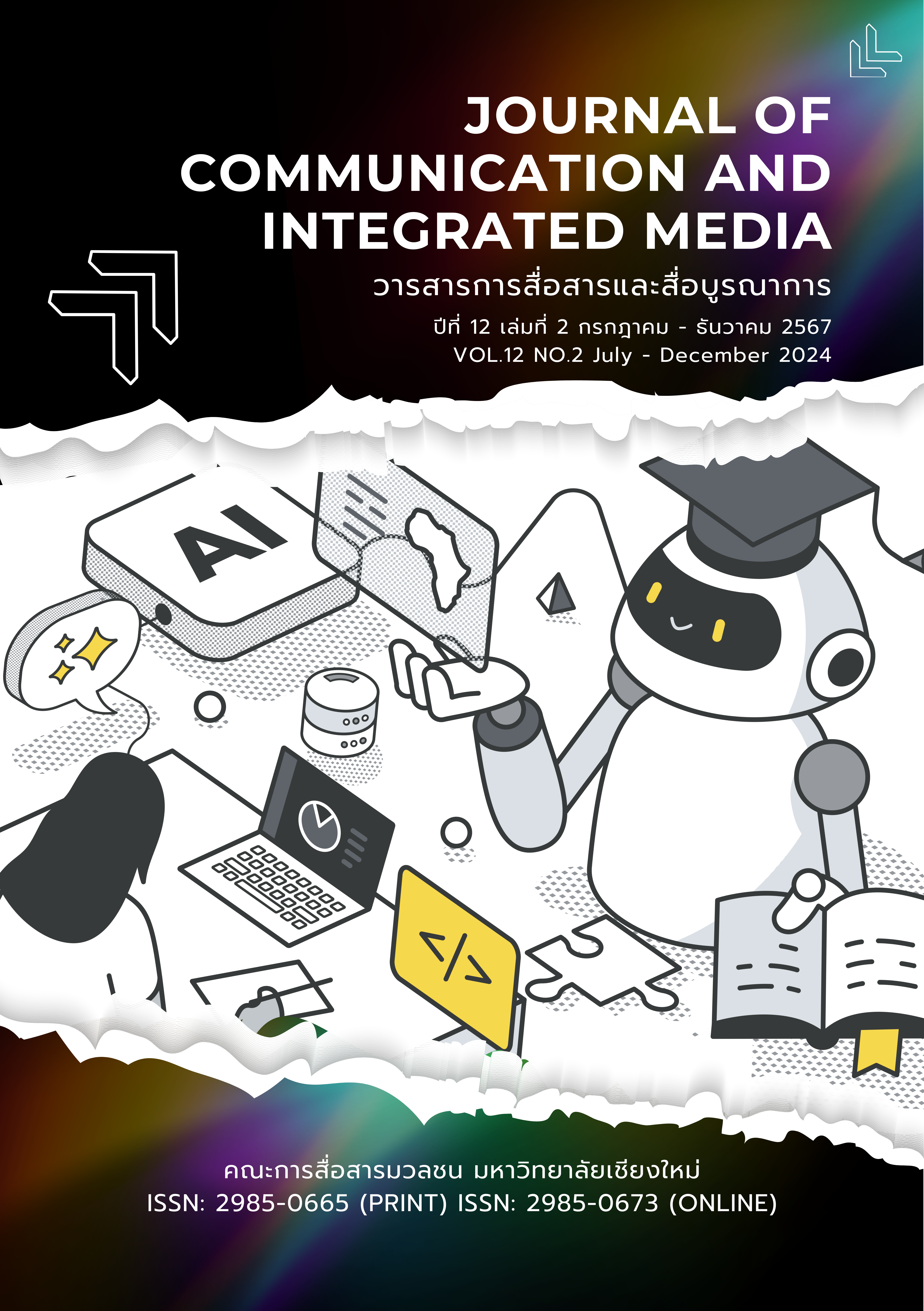Concept and Style of Special Effects Makeup: A Case Study of Suphannahong National Film Awards During B.E. 2553 - 2563
Main Article Content
Abstract
The research titled “Concepts and Techniques of Special Effects Makeup: A Case Study of Thai Films Awarded the Suphannahong National Film Award from 2010 to 2020” aims to examine the concepts and techniques of special effects makeup in Thai films that received the Suphannahong National Film Award for Best Makeup Effects between 2010 and 2020. This qualitative research analyzes the appearances of the main characters involving special effects makeup and interviews with special effects makeup artists from award-winning Thai films. Most of these films fall under the horror genre. The findings reveal that the primary concepts for special effects makeup are derived from a detailed studying of the screenplay and an analysis of characters requiring such makeup. These characters are often portrayed as individuals who have died violently and return as vengeful spirits, appearing in terrifying forms. The conceptualization process involves discussions with film directors and related personnel, drawing upon reference materials, imagination, and the experience of the makeup artists. In terms of techniques, the most commonly found makeup type involves transforming characters into ghosts with visible wounds on their bodies. The makeup process integrates elements of artistic composition applied in various ways. Utilizing two primary techniques: (1) direct application of special effects makeup onto the actors’ skin and (2) the use of prosthetics. Additionally, the research identifies strategies employed by makeup artists to address budget constraints in creating special effects makeup for award-winning Thai films
Article Details

This work is licensed under a Creative Commons Attribution-NonCommercial-NoDerivatives 4.0 International License.
ลิขสิทธ์ที่ผู้เขียนบทความต้องยอมรับ
References
กฤษดา เกิดดี. (2547). ประวัติศาสตร์ภาพยนตร์การศึกษาว่าด้วย 10 ตระกูลสำคัญ (พิมพ์ครั้งที่ 3). พิมพ์คำ.
กฤษณ์ คำนนท์. (2552). การสร้างภาพตัวแทนด้วยการแต่งหน้าเพื่อสื่อความหมายลักษณะตัวละครของละครโทรทัศน์ไทย [วิทยานิพนธ์ปริญญามหาบัณฑิต, จุฬาลงกรณ์มหาวิทยาลัย]. CUIR. http://cuir.car.chula.ac.th/handle/123456789/19654
ปดิวลดา บวรศักดิ์. (2566, 7 เมษายน). ผี นานาสาระความเชื่อในวัฒนธรรมไทย. ศิลปวัฒนธรรม. https://www.silpa-mag.com/on-view/article_105818
ปรวัน แพทยานนท์. (2556). ตัวละครและสไตล์การแสดงในบริบทสังคมและวัฒนธรรมไทย : กรณีศึกษาภาพยนตร์ไทยที่ได้รับรางวัลภาพยนตร์สุพรรณหงส์. วารสารสถาบันวัฒนธรรมและศิลปะ, 14(2), 6-9.
ปิลันลน์ ปุณญประภา. (2555). การศึกษาองค์ประกอบและลักษณะเฉพาะของหนังผีไทยในช่วงปี พ.ศ. 2548-2552 (รายงานผลการวิจัย). มหาวิทยาลัยศรีนครินทรวิโรฒ.
พฤทธิ์ ศุภเศรษฐศิริ. (2543). แต่งหน้าเพื่อการแสดง. เศรษฐศิลป.
พัชนี แสนไชย. (2560, 5 มีนาคม). การแต่งหน้าด้วยเทคนิคพิเศษในภาพยนตร์. คณะวิทยาการจัดการ มหาวิทยาลัยราชภัฏบ้านสมเด็จเจ้าพระยา. https://shorturl.at/Juocs
รักศานต์ วิวัฒน์สินอุดม. (2546). นักสร้าง สร้างหนัง หนังสั้น. โครงการตำราคณะนิเทศศาสตร์ จุฬาลงกรณ์มหาวิทยาลัย.
สาธิดา เตชะภัทรพร. (2541). บทบาทของการแต่งหน้าในฐานะเป็นส่วนขยายความรู้สึกทางด้านจิตใจในสื่อวิทยุโทรทัศน์ [วิทยานิพนธ์ปริญญามหาบัณฑิต]. จุฬาลงกรณ์มหาวิทยาลัย.
Burton, G. (2002). More than meets the eyes: An introduction to media studies (3rd ed.). Hodder Education Publishers.
Key, M. (2017). World Wide Weekend. Youtube. https://www.youtube.com/watch?v=RD6I2MVJE1

